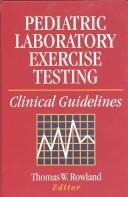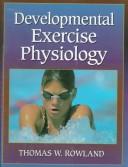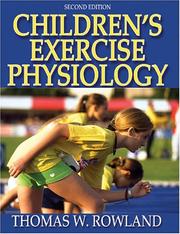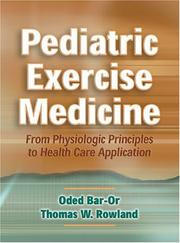| Listing 1 - 10 of 15 | << page >> |
Sort by
|
Book
ISBN: 9780736082747 0736082743 Year: 2011 Publisher: Champaign, IL Human Kinetics
Abstract | Keywords | Export | Availability | Bookmark
 Loading...
Loading...Choose an application
- Reference Manager
- EndNote
- RefWorks (Direct export to RefWorks)
In this exceptionally readable exploration of athletic achievement, the author draws practical conclusions from science and experience to describe how various aspects of time affect sport performance. Readers can investigate challenging questions such as whether athletes consciously control sport performance, how young athletes can be safely nurtured to greatness, and what the optimal time of day is for training. This book takes you on a wide-ranging journey into the complexity and beauty of the human body in motion. It will forever change the way you watch and participate in sport as you come to realize it's all in the timing. -- from Back Cover.
Athletic Performance --- Chronobiology Phenomena --- Sports --- Chronobiology. --- Chronobiologie --- physiology. --- Physiological aspects. --- Aspect physiologique --- Biological time --- Biology --- Time --- Athletics --- Sports physiology --- Sports sciences --- Physiological aspects --- 612:796 --- 612:796 Fysiologie van de sport --- Fysiologie van de sport --- Chronobiology --- physiology
Book
ISBN: 0873222822 Year: 1990 Publisher: Champaign, IL : ©1990 Human Kinetics Books,
Abstract | Keywords | Export | Availability | Bookmark
 Loading...
Loading...Choose an application
- Reference Manager
- EndNote
- RefWorks (Direct export to RefWorks)
The author combines his experience and interest to provide his colleagues with a highly authoritative guide on improving and maintaining children's health through exercise. This information-rich text offers "hands-on" guidelines for exercise prescription and physical fitness for healthy children and those with special health concerns like obesity, heart disease, asthma, eystic fibrosis, diabetes, and seizure disorders
Exercise --- Health --- Physical Fitness --- Exercise for children --- Physical fitness for children --- Exercices pour enfants --- Condition physique des enfants --- in infancy & childhood --- Health aspects --- Aspect sanitaire --- Child --- Health aspects. --- Child. --- Exercise. --- Health. --- Physical Fitness. --- 612:796 --- -Physical fitness for children --- gezondheid: kinderen --- sport en gezondheid --- Children --- Fitness, Physical --- Normalcy --- Normality --- Normalities --- Minors --- Acute Exercise --- Exercise Training --- Aerobic Exercise --- Exercise, Aerobic --- Exercise, Isometric --- Exercise, Physical --- Isometric Exercise --- Physical Activity --- Activities, Physical --- Activity, Physical --- Acute Exercises --- Aerobic Exercises --- Exercise Trainings --- Exercise, Acute --- Exercises --- Exercises, Acute --- Exercises, Aerobic --- Exercises, Isometric --- Exercises, Physical --- Isometric Exercises --- Physical Activities --- Physical Exercise --- Physical Exercises --- Training, Exercise --- Trainings, Exercise --- Exercise Therapy --- Physical Exertion --- Sports --- Exercise Movement Techniques --- Fysiologie van de sport --- 612:796 Fysiologie van de sport --- Exercise Test --- in infancy & childhood. --- Physical fitness for children.

ISBN: 0873223802 Year: 1993 Publisher: Human Kinetics Books,
Abstract | Keywords | Export | Availability | Bookmark
 Loading...
Loading...Choose an application
- Reference Manager
- EndNote
- RefWorks (Direct export to RefWorks)
The book places special emphasis on laboratory-based exercise testing techniques for assessing and diagnosing the physical fitness of pediatric patients with cardiovascular, pulmonary, endocrine, musculoskeletal and metabolic disorders. The contributors review traditional aspects of pediatric testing, explore the latest techniques for using pediatric testing protocols and interpreting results, and identify areas where future research is needed
Exercise Test --- Children --- Exercise --- Exercise tests --- Enfants --- Exercice --- Epreuves d'effort --- in infancy & childhood --- methods --- Medical examinations --- Physiological aspects --- Examens médicaux --- Aspect physiologique --- 796.012 --- -Exercise --- -Exercise tests --- Function tests (Medicine) --- Physical activity --- Warm-up --- Workouts (Exercise) --- Health --- Physical education and training --- Childhood --- Kids (Children) --- Pedology (Child study) --- Youngsters --- Age groups --- Families --- Life cycle, Human --- Movement and motor functions: tests and measurement --- -Congresses --- Congresses --- Testing --- -Movement and motor functions: tests and measurement --- 796.012 Movement and motor functions: tests and measurement --- -796.012 Movement and motor functions: tests and measurement --- Examens médicaux --- Medical examinations&delete& --- Physiological aspects&delete& --- in infancy & childhood. --- methods. --- EXERCISE TEST --- IN INFANCY & CHILDHOOD --- CONGRESSES --- METHODS

ISBN: 0873226402 9780873226400 Year: 1996 Publisher: Champaign Human kinetics
Abstract | Keywords | Export | Availability | Bookmark
 Loading...
Loading...Choose an application
- Reference Manager
- EndNote
- RefWorks (Direct export to RefWorks)
Motor Activity --- Child development --- Exercise --- Motor ability in children --- Exercice --- Activité motrice chez l'enfant --- in infancy & childhood --- Physiological aspects --- Aspect physiologique --- Physiological aspects. --- 612:796 --- -Motor ability in children --- -fysiologie --- Motor development in children --- Perceptual-motor learning --- Physical education for children --- Physical activity --- Warm-up --- Workouts (Exercise) --- Health --- Physical education and training --- Fysiologie van de sport --- 612:796 Fysiologie van de sport --- Activité motrice chez l'enfant --- fysiologie --- Exercise physiology --- Clinical exercise physiology --- Physiological effect --- Child Development. --- in infancy & childhood. --- Motor ability in children - Physiological aspects. --- Exercise - Physiological aspects.

ISBN: 0736051449 9780736051446 Year: 2005 Publisher: Champaign Human kinetics
Abstract | Keywords | Export | Availability | Bookmark
 Loading...
Loading...Choose an application
- Reference Manager
- EndNote
- RefWorks (Direct export to RefWorks)
Exercise for children --- Motor ability in children --- Exercices pour enfants --- Activité motrice chez l'enfant --- Physiological aspects. --- Aspect physiologique --- 612:796 --- 612.6 --- Fysiologie van de sport --- Voortplanting. Groei. Ontwikkeling --- 612:796 Fysiologie van de sport --- Activité motrice chez l'enfant --- Motor development in children --- Child development --- Perceptual-motor learning --- Physical education for children --- Children --- Physiological aspects
Book
ISBN: 9781492526513 1492526517 Year: 2017 Publisher: Champaign, IL Human Kinetics
Abstract | Keywords | Export | Availability | Bookmark
 Loading...
Loading...Choose an application
- Reference Manager
- EndNote
- RefWorks (Direct export to RefWorks)
Motor Activity --- Brain --- Energy Metabolism --- physiology. --- 612.6 --- 612.8 --- 572.511 --- 612:796 --- 612:796 Fysiologie van de sport --- Fysiologie van de sport --- 572.511 Posture. Corpulence. Steatopygia --- Posture. Corpulence. Steatopygia --- 612.8 Nervous system. Sensory organs --- 612.8 Zenuwstelsel. Zintuigen. Motorische neurowetenschappen --- Nervous system. Sensory organs --- Zenuwstelsel. Zintuigen. Motorische neurowetenschappen --- 612.6 Reproduction. Growth. Development --- 612.6 Voortplanting. Groei. Ontwikkeling --- Reproduction. Growth. Development --- Voortplanting. Groei. Ontwikkeling --- Motor ability --- Energy metabolism --- Activité motrice --- Métabolisme énergétique --- physiology --- Physiological aspects --- Regulation --- Aspect physiologique --- Régulation --- Activité motrice --- Métabolisme énergétique --- Régulation
Book
ISBN: 1527559246 9781527559240 1527558525 9781527558526 Year: 2020 Publisher: Newcastle upon Tyne, England : Cambridge Scholars Publishing,
Abstract | Keywords | Export | Availability | Bookmark
 Loading...
Loading...Choose an application
- Reference Manager
- EndNote
- RefWorks (Direct export to RefWorks)
Book
Year: 2017 Publisher: Champaign, IL : Human Kinetics,
Abstract | Keywords | Export | Availability | Bookmark
 Loading...
Loading...Choose an application
- Reference Manager
- EndNote
- RefWorks (Direct export to RefWorks)
The benefits of a healthy lifestyle are well documented, yet many people continue to struggle with sedentary behavior and obesity. In Biologic Regulation of Physical Activity, Dr. Thomas W. Rowland posits a distinct possibility of the existence of a central biologic controller of activity. If harnessed, this mechanism could lead to breakthroughs in health science professionals' quest for more effective ways of helping people be more active and, as a result, healthier. Rowland is one of the most well-respected pediatric cardiologists in the United States. He has authored three other books and more than 150 journal articles and has served in several key national leadership positions in pediatric medicine. In Biologic Regulation of Physical Activity, Rowland uses his expertise, along with numerous references and direct quotes from expert witnesses, to provide a detailed account of how current research may support the existence of a biologic regulator--a mechanism in the brain that involuntarily controls biological processes--associated with physical activity. Rowland proposes a possible mechanism for such a control and explores the implications of this theory. This developing area of research and theory offers a new lens through which health professionals and those who research issues related to obesity, physical activity adherence, and sedentary behaviors can view their work. The book moves methodically through the research, rationale, and implications of a biologic regulator of physical activity. In part I, Surveying the Evidence, readers are guided through a litany of research--both on humans and on animals--that provides support for the existence of a biologic regulator. This section synthesizes evidence from an interdisciplinary perspective, covering research on topics such as behavioral disorders, brain damage, lifetime activity patterns, and sex differences. Part II, Rationale and Mechanisms details the possible biologic explanation for control of energy output through activity and proposes a mechanism by which it might function in order to maintain an energy in-energy out balance. The hypothesis presented in this section is that the body has a need for energy balance that leads to activity regulation, similar to how the body regulates appetite. In part III, Implications of Biologic Regulation of Activity, some clear implications from current research, which may help health science professionals in their treatment and prevention efforts against patients' obesity and inactivity, are discussed. Rowland also poses some critical questions for further research, if indeed a biologic controller of activity exists, such as how much effect a biologic controller might have on activity level as compared to environmental factors and whether this biologic regulator could be altered. This book will initiate further discussion, examination, and research into the idea that physical activity may be, at least in part, controlled by a central biologic regulator. Further study may lead to a widespread realization that there is an involuntary biologic regulator of activity that, once fully understood, could lead researchers to discover alternative interventions in the fight against inactivity and obesity.
Book
Year: 2011 Publisher: Champaign, IL : Human Kinetics,
Abstract | Keywords | Export | Availability | Bookmark
 Loading...
Loading...Choose an application
- Reference Manager
- EndNote
- RefWorks (Direct export to RefWorks)
The Athlete's Clock: How Biology and Time Affect Sport Performance offers an engaging, interdisciplinary consideration of some of the most compelling questions in sport and exercise science. This unique text takes a broad look at the physiological clock, offering students, researchers, coaches, and athletes a unique approach to understanding how various aspects of time affect sport performance. The Athlete's Clock explores the ways in which time and its relationship to athletic effort can optimize sport performance. Readers can investigate challenging questions such as these: If physiological responses to training vary rhythmically throughout the day, what is the optimal time of day for training? If a coach thinks that a high stroke count leads to a better time in a particular swim event, should the athlete go with it? Or is it better to stick to a more intuitively normal cadence? Do endurance athletes consciously control their pacing, or are they under the control of unconscious processes within the central nervous system? In what ways do aging and rhythmic biological variations over time control athletic performance? Can athletes use cognitive strategies to subdue or overcome limits imposed by biological factors out of their control? Readers will find information on the mechanisms by which time influences physiological function--such as running speeds and muscle activation--and how those mechanisms can be used in extending the limits of motor activity. Chapter introductions cue readers to the ideas addressed in the chapter, and sidebars throughout present amusing or unusual examples of sport and timing within various contexts. In addition, take-home messages at the end of each chapter summarize important findings and research that readers may apply in their own lives. Addressing one of the most intriguing questions in sports, a conversational interview with athlete development expert, anthropologist, and sport scientist Bob Malina covers the timely topic of sport identification and talent development. The interview is an engaging discussion of how and when talent identification should take place and how talent development for young, promising athletes might proceed. The text also considers how time throughout one's life span alters motor function, particularly in the later years. The Athlete's Clock: How Biology and Time Affect Sport Performance blends physiological, psychological, and philosophical perspectives to provide an intelligent and whimsical look at the effects of timing in sport and exercise. This text seeks to provoke thought and further research that look at the relationship between biology, time, and performance as well as an understanding of and appreciation for the intricacies of human potential.

ISBN: 0880115971 Year: 2004 Publisher: Champaign Human kinetics
Abstract | Keywords | Export | Availability | Bookmark
 Loading...
Loading...Choose an application
- Reference Manager
- EndNote
- RefWorks (Direct export to RefWorks)
Exercise for children --- Exercise therapy for children --- 612:796 --- 615.825 --- 61:796 --- 61:796 Sportgeneeskunde --- Sportgeneeskunde --- 612:796 Fysiologie van de sport --- Fysiologie van de sport --- Physical therapy for children --- Children --- Revalidatie door beweging. Mechanotherapie --- Exercise Therapy --- Exercise for children. --- Exercise therapy for children. --- Exercise --- Exertion --- Adolescent. --- Child. --- physiology
| Listing 1 - 10 of 15 | << page >> |
Sort by
|

 Search
Search Feedback
Feedback About
About Help
Help News
News